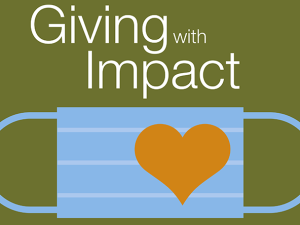Are We Facing a Mental Health Crisis for Boys?
Emphasizing stoicism, toughness, and competition can leave boys without the emotional tools they need to thrive. How can we change course before the problem gets out of hand?
While the teenage years have always been a time for critical development and heightened emotions, America’s teens now seem to be struggling more than ever—especially boys. One study found that the rates of depression increased by 52 percent in teens between 2005 and 2017, and in 2019, 70 percent of teens reported anxiety and depression as major problems. For boys in particular, there has been an alarming rise in suicides among older teens (15 and older) since 2000, and they die by suicide at three to four times the rates of girls.
From an early age, boys are encouraged to bury their feelings and present a tough exterior. Experts say these social dynamics have long-term implications for their mental health.
While there is no one cause, psychologists and educators point to increasing pressures to succeed in school and a growing reliance on technology, that can leave kids feeling isolated and vulnerable—a situation exacerbated by Covid-19. According to experts, boys can struggle more than girls because they have fewer tools to cope with emotions and stressors, and they are less likely to get the help they need. Without the means to effectively process emotions, boys are more prone to lash out in unhealthy ways or alienate themselves.
Our expectations and stereotypes of boys are preventing us from seeing boys—their social and emotional desires and capacities—in broad daylight. The consequences of such disconnection and blindness are evident in the statistics suggesting a ‘boy crisis. But it’s not hopeless. Boys can benefit from a school culture that destigmatizes mental health issues, creates opportunities to connect with other boys, confronts ingrained masculine stereotypes, and provides support from adults who understand their needs.
BOYS AND OUTBURSTS
When boys can’t express emotions in a healthy way, they may become depressed or act out with anger and violence, experts say. According to some experts boys are prone to externalize their problems with anger, outbursts, or even violence. Data shows that boys are nearly twice as likely to get into physical altercations as girls, for example. Often, rather than an exploration of the cause of the behavior, these outbursts result in punishment by schools and parents being biased and unfair, particularly for students of color and students with disabilities.
Because boys tend to lack emotional vocabulary—or they don’t feel free to express their feelings—their behavior becomes their communication. “When a boy is acting out or is disrespectful, instead of personalizing it, we have to target their behaviors and not assault their character, recommendation is that educators give them more tools to express themselves.
Create spaces for boys to connect with boys: While boys can be reluctant to talk to therapists without nudging, one way to grow their emotional muscles is through affinity support groups at school, which research shows can be an effective tool for mitigating the impacts of distress and trauma. There, boys can start discussing common interests and superficial issues, then progress to talking about the pressures of growing up as a boy.
But these boy groups don’t necessarily have to be run by a therapist or involve sitting around in a circle. Sometimes, a group or an activity—like fundraising, volunteering, or playing sports—can help boys with some underlying issues by giving them an outlet and a focus, other experts say.
MAKING CONNECTIONS
Yet even with opportunities to connect, sometimes it can be hard for boys to be emotionally vulnerable, especially with other boys. While boys may connect with each other by bumping shoulders during sporting events or by playing video games together, those games can be “a convenient distraction from meaningful connection,” explained Reiner. If and when they open up about their problems, they might do it with female friends instead, not male friends, to avoid appearing weak.
Build an empathetic school culture: As boys get older, their natural desire for connection is curbed by cultural forces that tell them that focusing on relationships is both feminine and immature. Efforts like creating an empathetic school culture can help boys learn to listen and to share—skills needed to form tight relationships and to learn the building blocks of friendship.
Teachers and parents should be trained to look for warning signs that a student is struggling mentally, including contemplating suicide. The relationships that you build with students help overcome some of the larger societal stigma and barriers that males tend to experience. By teaching students that it’s OK to reach out for help, schools can help boys overcome those barriers to self-expression and connections with others.
If you or someone you know is struggling with suicidal thoughts, you are not alone. Call the National Suicide Prevention Lifeline at (800) 273-TALK (8255). They provide free help 24/7.









